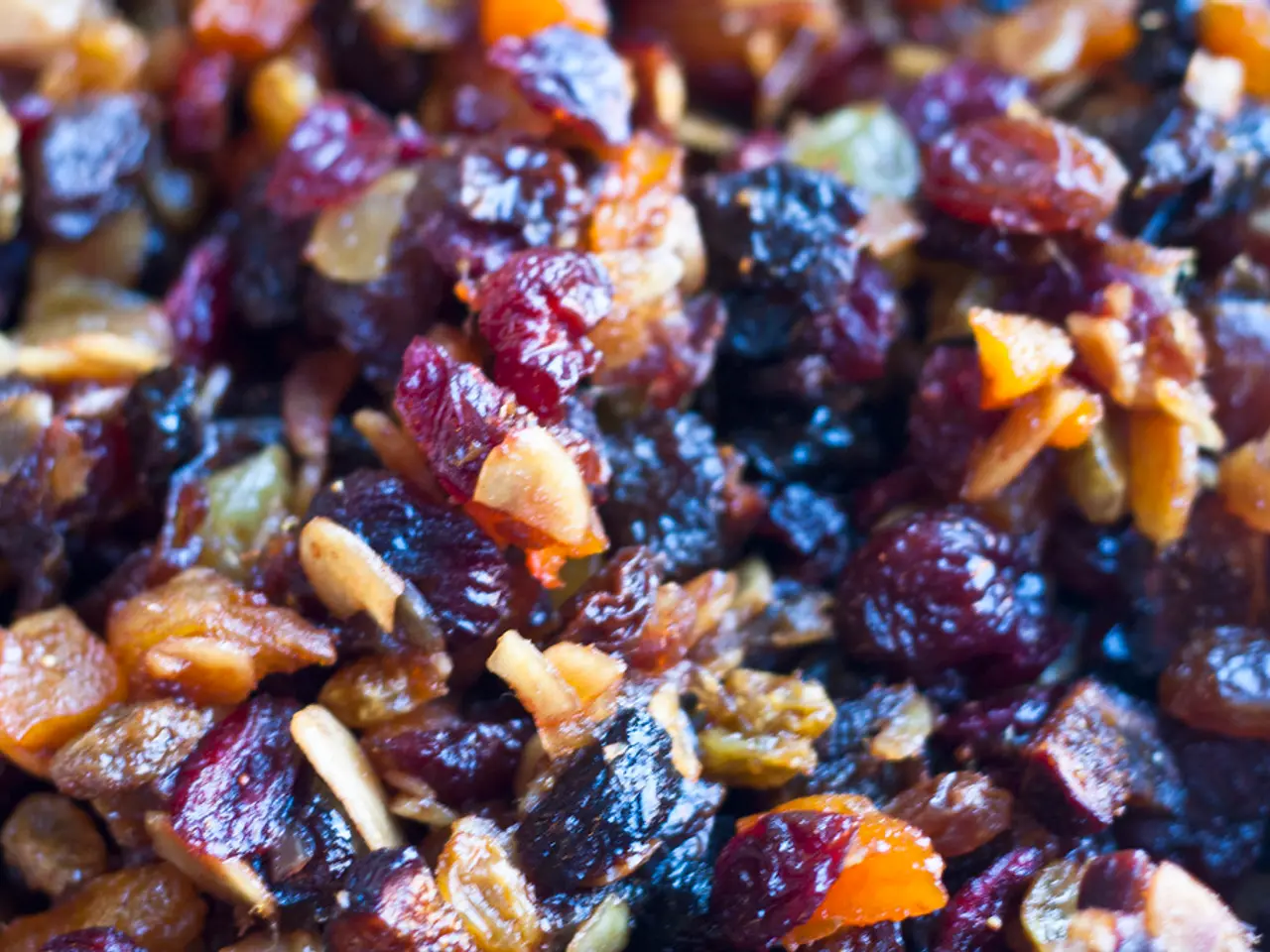Foods Consuming Red Dye 40 and ADHD Symptoms Explored
In a recent development, research has suggested a connection between the synthetic color additive Red Dye 40 and symptoms associated with Attention Deficit Hyperactivity Disorder (ADHD) in children. This dye, commonly used in various food and beverage products, has been found to potentially worsen existing ADHD symptoms, although it does not cause the disorder.
Red Dye 40, a synthetic color additive made from petroleum, is present in a wide range of foods and beverages. These include energy and sports drinks, soda, protein powders, cereals, dairy products, gelatins, candy, chewing gum, confections, and more.
Hyperactivity symptoms associated with Red Dye 40 can include constant fidgeting, an inability to concentrate, being unable to sit still, excessive movement, an inability to wait their turn, interrupting conversations, little or no sense of danger, and in adults, restlessness and excessive talking. Other neurobehavioral effects in children may also be caused by Red Dye 40, according to multiple studies.
The evidence supporting this link between Red Dye 40 and ADHD symptoms comes from controlled challenge and elimination diet studies, animal studies, and human trials. Removing Red Dye 40 from a child's diet has been shown to reduce symptoms, and experimental data demonstrate increased brainwave activity and neurotransmitter disruption linked to this dye.
Animal studies have corroborated these findings, showing increased activity and reduced habituation in rodents exposed to doses of synthetic dyes comparable to human consumption levels. Human studies, including double-blind crossover trials, have observed heightened neurobehavioral responses and brainwave changes after food dye exposure in individuals with ADHD.
However, the U.S. Food and Drug Administration (FDA) and other authorities maintain that synthetic dyes do not cause ADHD. The dyes are not believed to cause new cases of ADHD but may exacerbate symptoms in genetically or biochemically susceptible children. The mechanism may involve histamine release or interference with neurotransmitter systems regulating attention and behavior.
Despite the ongoing debate, parents and clinicians often consider elimination diets to assess if symptoms improve with reduced dye intake. It's important to note that while Red Dye 40 is generally safe for most children, the evidence suggests that in children with ADHD, consumption of this dye may worsen hyperactivity and related symptoms.
On the other hand, the relationship between a diet high in refined sugar and saturated fat and ADHD is less clear. While some research suggests a link, the current evidence is weak, and more research is necessary to draw definitive conclusions.
To identify Red Dye 40 on food labels, consumers can look for its various names such as Allura Red AC, Red 40, Red 40 Lake, FD&C Red no. 40 Aluminum Lake, FD&C Red no. 40, E129, CI Food Red 17, and INS no. 129.
In conclusion, while Red Dye 40 is generally safe for most children, substantial evidence supports that in children with ADHD, consumption of this dye may worsen hyperactivity and related symptoms, though it does not cause the disorder itself. Parents and clinicians often consider elimination diets to assess if symptoms improve with reduced dye intake.
- A connection between depression and multiple types of health issues, such as COPD, NSCLC, diabetes, and bipolar disorder, has not been conclusively established by science.
- Macular degeneration, a type of degeneration affecting the eyes, is not directly linked to the consumption of Red Dye 40, but it's crucial to maintain overall health-and-wellness for good visual health.
- Multiple sclerosis, a disease characterized by the immune system's attack on the central nervous system, is not believed to be influenced by Red Dye 40 or dietary choices, but proper nutrition is important for overall health and well-being.
- Scientists are currently exploring the predictive relationship between asthma and aq (air quality), to develop more effective treatments and management strategies for this chronic condition.
- A diet high in refined sugar and saturated fat is often associated with an increased risk of type 2 diabetes, but the link between these factors and ADHD is yet to be established clearly.
- The pharmaceutical company Pfizer is expanding its research into the area of mental health, aiming to develop innovative treatments for disorders like depression and to improve overall mental-health outcomes.
- Fitness-and-exercise, combined with a balanced diet and appropriate medication, can help people with ADHD better manage their symptoms, enhancing their overall health-and-wellness and quality of life.
- In addition to dietary changes, parents and caregivers can also benefit from education on effective parenting strategies to support children with ADHD, helping them to manage their behavior and improve their focus.
- Blocked mental pathways and poor nutrition can contribute to depression, but balanced nutrition and mental-health treatments can help address these issues and promote overall health-and-wellness.
- Dry eyes can be a symptom of various conditions, including diabetes and multiple sclerosis, but it can be managed with appropriate treatments and eye care to preserve vision.
- Embracing a health-and-wellness lifestyle that includes proper nutrition, regular fitness-and-exercise, and mental-health management can help improve symptoms of diseases such as ADHD, depression, and diabetes, promoting overall well-being.




